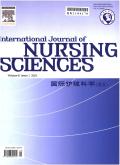“成为一个家庭”——隐性课程在机构使命转移中的作用:来自一所百年护理学校的经验
IF 3.1
3区 医学
Q1 NURSING
引用次数: 0
摘要
目的探讨隐性课程在护生教育使命传递中的作用及其对护生专业社会化的影响。方法采用建构主义理论对澳门一所百年护理学校的26名学生和5名教师进行研究。半结构式访谈考察了护生选择特定护理学校的影响因素和他们在护理学习中的一般学习经历。开放和专注的编码被用于开发类别和概念,这些类别和概念捕捉了隐藏课程如何影响学生的个人经历、观念和与发展他们的职业身份相关的价值观的细微差别。数据分析以“实践共同体”模型为指导。结果教育使命培养了注重培养素质和社会责任的隐性课程,营造了家庭式的学习环境,对护生的专业社会化产生了积极影响。在“成为一个家庭”的核心主题下,出现了两个副主题:“学生与同伴的互动——培养姐妹/兄弟般的学习伙伴关系”和“学生与教师的互动——教师作为育儿导师的作用”。虽然隐性课程在学生之间促进了民主和平等的学习氛围,但同时也强化了高年级和低年级学生之间的等级权力动态和师生关系,反映了中国传统家庭中经常发现的基于权力的人际动态。结论明确教育使命有助于形成有利于护生专业社会化的隐性课程。教师应反思隐性课程所带来的权力不平等,并在师生关系中建立适当的界限。本文章由计算机程序翻译,如有差异,请以英文原文为准。
“Becoming a family”—the effects of the hidden curriculum in transferring institutional mission: An experience from a century-old nursing school
Objectives
This study aimed to examine the role of the hidden curriculum in transmitting the educational mission and its impacts on nursing students’ professional socialization.
Methods
This constructivist grounded theory study involved twenty-six students and five faculty members from a century-old nursing school in Macau. Semi-structured interviews examined the factors influencing nursing students’ choice of a specific nursing school and their general learning experiences in nursing studies. Open and focused coding was employed to develop categories and concepts that capture the nuances of how the hidden curriculum influences students’ personal experiences, perceptions, and values related to developing their professional identities. The data analysis was guided by the “Community of Practice” model.
Results
The educational mission fostered a hidden curriculum that emphasized nurturing qualities and social responsibilities, creating a family-like learning environment that positively influenced the professional socialization of nursing students. Under the core theme of “becoming a family,” two sub-themes emerged: “student-peer interactions - fostering sisterly/brotherly learning partnerships” and “student-faculty interactions – faculty’s acting as parenting instructors.” While the hidden curriculum promoted a democratic and egalitarian learning atmosphere among student-peers, it simultaneously reinforced hierarchical power dynamics among senior-junior students and student-faculty relationships, mirroring the power-based interpersonal dynamics often found in traditional Chinese families.
Conclusions
Explicating the educational mission can help shape a hidden curriculum that benefits nursing students’ professional socialization. Faculty members should reflect on the power inequalities reproduced by the hidden curriculum and establish appropriate boundaries in student-faculty relationships.
求助全文
通过发布文献求助,成功后即可免费获取论文全文。
去求助
来源期刊

International Journal of Nursing Sciences
Nursing-Nursing (all)
CiteScore
6.10
自引率
2.60%
发文量
408
审稿时长
25 days
期刊介绍:
This journal aims to promote excellence in nursing and health care through the dissemination of the latest, evidence-based, peer-reviewed clinical information and original research, providing an international platform for exchanging knowledge, research findings and nursing practice experience. This journal covers a wide range of nursing topics such as advanced nursing practice, bio-psychosocial issues related to health, cultural perspectives, lifestyle change as a component of health promotion, chronic disease, including end-of-life care, family care giving. IJNSS publishes four issues per year in Jan/Apr/Jul/Oct. IJNSS intended readership includes practicing nurses in all spheres and at all levels who are committed to advancing practice and professional development on the basis of new knowledge and evidence; managers and senior members of the nursing; nurse educators and nursing students etc. IJNSS seeks to enrich insight into clinical need and the implications for nursing intervention and models of service delivery. Contributions are welcomed from other health professions on issues that have a direct impact on nursing practice.
 求助内容:
求助内容: 应助结果提醒方式:
应助结果提醒方式:


